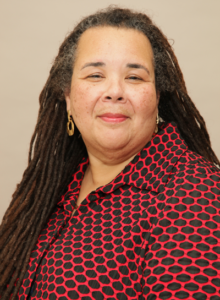power and privilege
Select an item by clicking its checkbox

Becoming Critical: The Emergence of Social Justice Scholars
Date Reviewed: August 30, 2016
This book presents readers with eleven compelling autoethnographies that combine critical theory and scholars’ lived experiences. Each contributor deserves its own recognition for the courageous act of opening up private spaces for public discussion, utilizing their own experiences as data. Described as a “nontraditional way of knowing,” autoethnography, as a form, “challenges the criticism of traditional positivist epistemologies regarding ‘objectivity, absolute truth, and ‘validity’’” (13, 7). The text’s editors, Felicia M. Briscoe and Muhammad A. Khalifa, remark that they choose critical autoethnography as a genre because it “allows us to represent knowledge outside a traditional European framework” (13).
Western academe is itself a culture – one historically dictated by White middle-class male norms. Autoenthographies produced by those belonging to marginalized and often silenced groups counter and disrupt narratives of the dominant academic discourse. Each of these scholars tells their own story and documents their experience of ‘becoming critical’ when they recognized the oppressive power of relationships at work in their worlds, reacted to them, and in the end, endeavored to steer society towards “greater social, political, and economic equity” each in their own way (10). These autoethnographies are, in short, counter-narratives for social justice within higher education.
Drawing from such disparate sources as Comedy Central’s Chapelle’s Show to renowned theorists such as Patricia Hill Collins, Paulo Freire, and Pierre Bourdieu, these texts pull from a diverse range of mediums. While the experiences are varied and multifaceted, much of the theory drawn upon overlaps. Many of the authors use a Foucauldian understanding of the power/knowledge relationship (splendidly illustrated in Briscoe’s chapter) which suggests that power is not totally in the hands of one person. As Briscoe states, “people cannot be neatly divided into oppressors and the oppressed... we are oppressors in other ways” (120-121). Other common theories pervade the series, such as CRT (Critical Race Theory) which highlights the endemic nature of racism in American society. Many of the authors give a cursory nod to Judith Bulter’s concept of one’s identity as performative. However, Miguel De Oliver’s “We’re All Half-Breeds Now…in a Not so Ivory Tower” describes how, for the “racially ambiguous,” the space that one occupies becomes the “key to presumptions of identity” (228). In his experience, he need only occupy a particular space to be ascribed a specific identity (foreigner, Latino, “White,” Navajo, “Black athlete,” and so forth) (225-241).
Whether the chapter is about a Gusii woman (Damaris Moraa Choti) living in a world of male domination, experiencing cultural pressures (from primarily women relatives) to undergo clitoridectomy, who finds solace in her family’s Christian faith and love of education or a Black, male, Muslim’s (Muhammad A. Khalifa’s) encounter of being automatically singled out in class to respond to a Boyz N the Hood trailer because in the “White imaginative” Black males are expected to identify with the gangster nature, readers will be challenged by the worlds presented and drawn into the experiences described. Sadly, there are no easy answers and speaking out against institutional injustices often has very real material consequences (as noted in the chapter “Too Black, Yet Not Black Enough: Challenging White Supremacy in U.S. Teacher Education and the Making of Two Radical Social Misfits” by Brenda G. Juarez and Cleveland Hayes).
The case studies are divvied up by the contributor’s experience based on race and gender but perhaps the most instructive section focuses on the case studies documenting scholars’ intersecting dimensions of identity (race, gender, ethnicity, class, religious, and so forth). The autoethnographies in this section track how the authors embody multiple (sometimes conflicting) identities, occupy a myriad of roles, and negotiate their personal and professional identities amid the confines of higher education. In the chapter, “Working the Hyphens: Ethnographic Snapshots in Becoming Critical-Female-Black-Scholars,” El-Amin, Henry, and Laura fight the notion that there is “no room for real PhDs to take seriously scholarship that is politically, historically, and personally rooted in multiple identities” (208). These scholars’ stories – in fact, their very existence – explode the myth of the monolithic scholarly experience.
As the American university becomes exponentially diverse, college professors and administrators will need to be well-versed in critical theory as well as actively engaged in dialogues on difference. This book exposes the reader to both. Readers need not be educational professionals or “theory heads” to benefit from the stories presented here; anyone invested in social justice and educational equity will be rewarded by hearing these voices.
My grandmother used to speak in adages, parables, metaphors, similes and symbols. Now I call her proclivity for language, literature, and meaning-making “wisdom-speak.” Then, I thought she was being corny. She knew her wisdom-speak was meant to teach me enough until I am ready to know more. Her adages came ...
In Brazil, there has been a recent uprising of students fighting for justice and better education. Several political developments have spurred the revolt of fourteen- to seventeen-year-old students in defiance of arbitrary laws of governors. Let me mention four events. First, it was discovered that state deputies had stolen money ...
At the heart of education, the most important “instrument” of our lives, the house we inhabit, is the very core of our selves: our bodies. Fully! It is in and through our bodies that we learn and are able to unlearn. The immense diversity of our bodies, their shapes, formats, ...
If you spend much time in the Northwest of California, especially if you are someone who likes to hike, alongside trail maps at visitor centers you will see posters that instruct you how to handle the unlikely, but entirely possible, event that you might encounter a mountain lion. Unless you ...


